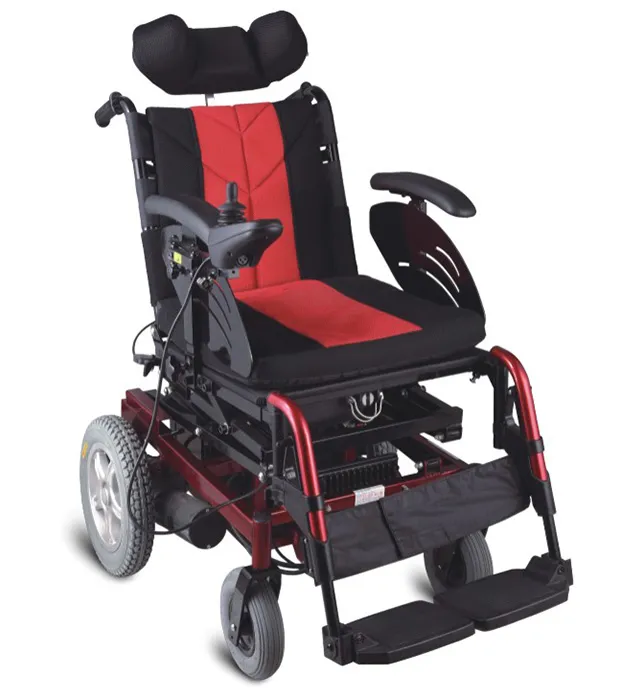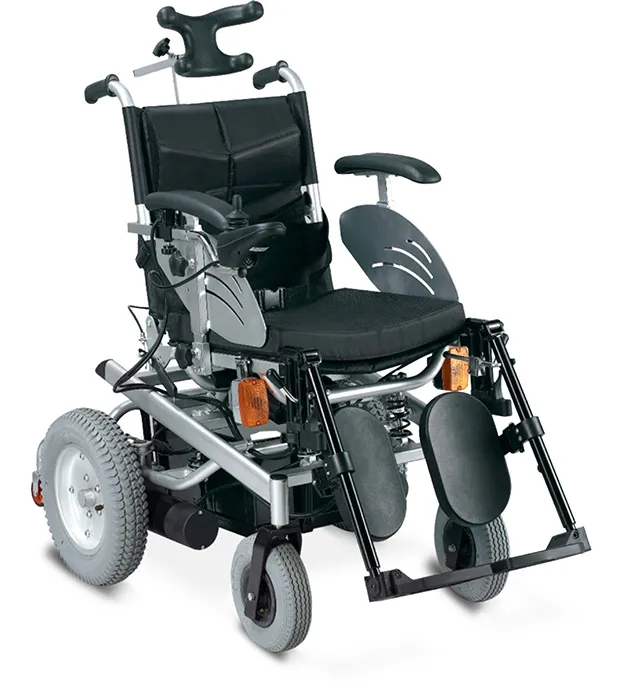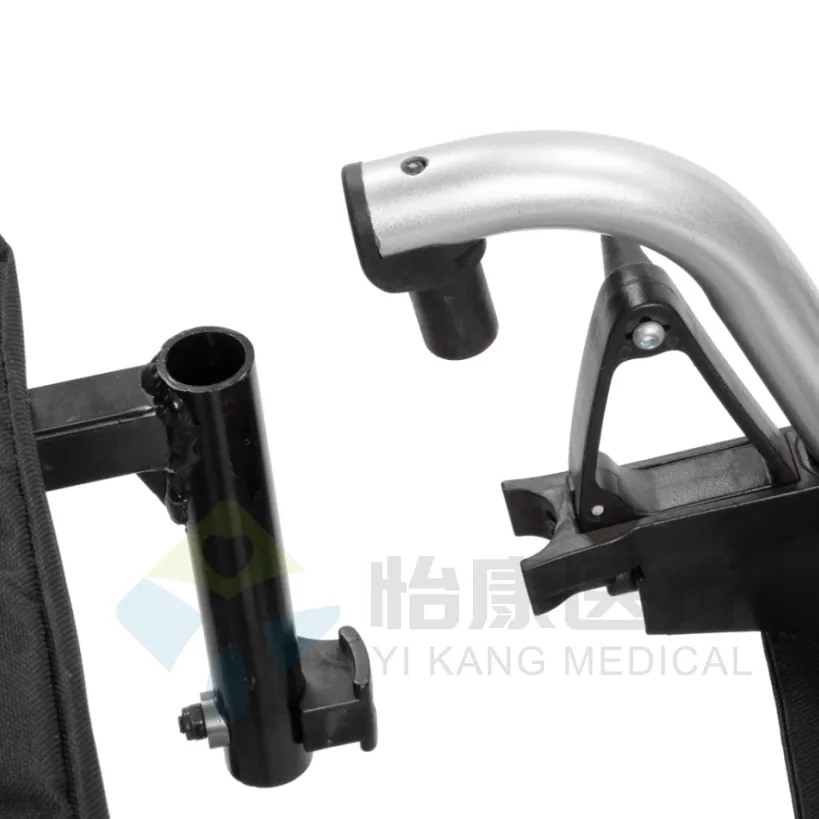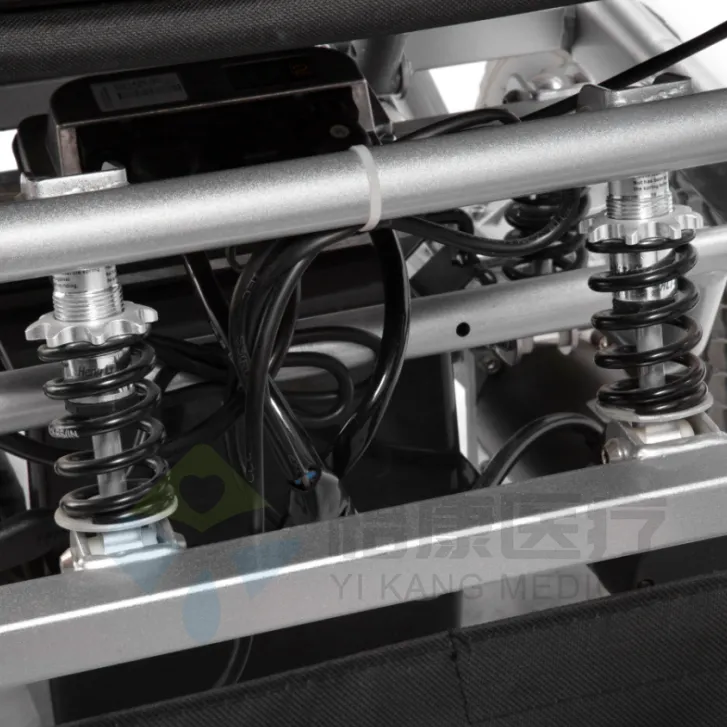The power wheel chair is no longer just a means of transportation, but an important part of the daily life of many middle-aged and elderly people, people with physical disabilities, and people with reduced independent travel ability. Although the power wheel chair is powerful and humanely designed, if the basic operating boundaries are ignored during use, some "things that can't be done" may seriously shorten its service life, and even cause equipment failure and personal injury.
Therefore, this in-depth report on the core issue of "What can't be done with a power wheel chair" provides users with knowledge support with high practical value.

1. The power wheel chair cannot be used as a means of transportation or a shelf
The original design of the power wheel chair was to assist a single person to travel, not to carry goods or multiple people. The seat structure, drive motor and load-bearing system of the electric wheel chairs are optimized for single-person use.
1.1 Two-person riding is prohibited
Some users let their children sit on their laps or carry one more person in the back seat in their home environment, which will directly lead to:
· Overload operation: Exceeding the load-bearing standard (mostly 100kg-120kg) will cause long-term loss of the electric motor, electronic control system, and battery discharge efficiency;
· Structural stress deformation: The frame, axle, and steering system are prone to loosening or even breaking under overload;
· Unbalanced control: Extra weight will cause the center of gravity of the power wheel chair to shift, especially when turning or going up and downhill.
1.2 Prohibition of carrying materials
Many users hang shopping bags, tool boxes, buckets and other heavy objects on the power wheel chair for convenience. If these additional loads are hung on the backrest or armrests for a long time, they will also cause:
· Deformation of the vehicle structure;
· Accelerated battery discharge;
· Steering failure or uneven tire wear.
Conclusion: The power wheel chair is not a shopping cart or a two-person car. Each of its performance parameters is calibrated around "single-person use". Exceeding this range will inevitably cause hardware failures and safety risks.
2. Power wheel chair cannot be driven in water or operated in high humidity
Unlike traditional manual wheelchairs, the core drive of power wheel chair relies on motor, battery and control module. This also means that it is extremely fragile in water environment.
2.1 It is strictly forbidden to drive in water
Even if some electric wheel chairs are advertised as "splash-proof" or "low waterproof level", they are only limited to light rain or humid environment. In actual use, if the electric wheel chair is driven into a puddle, water hole or water accumulation area, the following consequences will be brought about:
· Short circuit risk: water ingress to the motor, battery interface, and electronic control motherboard may immediately cause a short circuit, causing permanent burning;
· Rust erosion: Long-term wading causes bearings and rust, reducing the rolling efficiency of the wheelchair;
· Induction failure: water intrusion into the sensor may cause abnormal direction and speed.
2.2 It is forbidden to charge or park in a high humidity environment
Many users park the electric wheel chair in outdoor corridors, balconies or basements, ignoring the environmental humidity. High humidity environment not only affects battery performance, but also easily corrodes the connection lines, resulting in poor charging contact.
Conclusion: The electric wheel chair is not an "all-terrain vehicle". Any behavior such as "driving in the rain", "wading through water" or "parking by the water" may shorten the life of the vehicle and even cause fire or power outage.

3. The power wheel chair cannot be used as a recliner or work chair for a long time
Since the power wheel chair has a seat adjustment function, many users are accustomed to using it as an "all-weather multi-functional chair", including eating, typing, watching TV, and even taking a nap. However, excessive use of this non-mobile scene will also cause adverse consequences.
3.1 Long-term battery consumption
If the user does not turn off the power while using the electric wheel chair to watch TV, work, or eat, the controller system is still in standby operation, resulting in:
· Slow battery consumption;
· Continuous heating of the motherboard;
· Accelerated aging of the capacitor.
Especially when the power is on for more than 8 hours without use, the entire electronic system is prone to pseudo-death and crashes.
3.2 Structural overload and wear
When users continuously perform "non-mobile" gravity conversion on the power wheel chair, such as sitting down - standing up - leaning forward - rotating, it will cause:
·Seat rebound system;
·Footrest structure;
·Chair back connector
·Wear or looseness, thereby reducing stability and comfort.
Conclusion: The power wheel chair is not a piece of furniture for daily use. Every structural movement must be for the core purpose of "walking", otherwise it will inevitably accelerate mechanical fatigue and electrical aging.
4. The power wheel chair cannot climb high slopes or cross obstacles
Although the power wheel chair has a certain slope climbing ability (mostly 6-12°), this does not mean that it can handle any slope or obstacle.
4.1 Driving over the slope is prohibited
For convenience, many users will try to use the electric wheel chair to go up and down the subway passage slope, parking lot steep slope or community steps directly. This will lead to:
·Motor overheating and burning;
·Tire idling and slipping;
·The whole machine will tilt backward and overturn.
Especially when loaded, the uphill power consumption is extremely large, far exceeding the rated power of the equipment, often causing emergency stops or "reverse" accidents.
4.2 It is forbidden to crush thresholds, stones, and steps
The power wheel chair has a low chassis and weak impact resistance. Forcing it over thresholds, protruding bricks and stones, and outdoor potholes will cause:
· Chassis impact deformation;
· Drive shaft fracture;
· Footrest damage.
Conclusion: The electric wheel chair does not have off-road performance, and its working environment should be a flat, non-protruding hard road. Any "challenging the limit" behavior will make it unreliable.

5. The power wheel chair cannot be mixed with non-original parts or modified privately
In order to improve comfort or performance, some users try to replace tires, batteries, controllers, and even replace seats with sofa cushions. These "non-original operations" are very likely to have serious consequences.
5.1 Electronic control system mismatch
The battery output, motor power, and electronic control board logic of each electric wheel chairs are highly matched. Unauthorized replacement with non-standard batteries or high-speed motors will result in:
· Output overvoltage and burnout;
· Command delay and loss of control;
· Power identification error.
5.2 Durability of components cannot be guaranteed
Non-original seats, wheels, armrests, brake handles and other substitutes often lack strength verification and are prone to breakage or excessive wear in stress concentration areas.
Conclusion: The electric wheel chair is not a DIY kit. Its core system has high precision and low fault tolerance. Any unauthorized change to the original configuration will bury safety hazards and completely lose maintenance guarantees.
6. The power wheel chair cannot be used for a long time or over-discharged without being fully charged
The battery system is the "heart" of the electric wheel chair, and reasonable charging and discharging habits determine its service life. If it is in an over-discharged or frequently short-charged state for a long time, the battery performance will be quickly reduced.
6.1 Deep discharge is prohibited
Some users are used to "recharging until it is completely exhausted", thinking that this can "make full use of the power". In fact, both lithium batteries and lead-acid batteries are extremely sensitive to deep discharge, which can easily lead to:
·Charging circuit interruption;
·Permanent battery damage;
·Activation failure and cannot be recharged.
6.2 Frequent interruption of charging is prohibited
Frequently plugging in the battery for a few minutes and then unplugging it, or multiple "fast charging", will also cause battery capacity misidentification and electronic control board data errors, affecting the battery life of the whole machine.
Conclusion: The battery management system of the electric wheel chair relies on stable charging rules. Any human interference with the battery logic will affect its normal output and even cause the whole machine to fail to start.

The power wheel chair should be treated as a "precision device"
In essence, the electric wheel chair is a precise, intelligent, and matching auxiliary walking device, not a versatile furniture for life, an electric vehicle substitute, or a transportation vehicle. The reliable operation of its performance depends on the user's strict compliance with the operating boundaries.
Here’s a quick summary of the above “definitely don’ts”:
| Restricted Area Behavior | Consequences |
| 1. Carrying multiple people/carrying heavy objects | Overload operation, structural loss, unbalanced control |
| 2. Driving in water/parking in high humidity | Electronic control short circuit, rust corrosion, system failure |
| 3. Not shutting down for a long time | Battery slow consumption, motherboard aging, risk of pseudo-death |
| 4. Climbing high slopes/crushing obstacles | Motor overheating, chassis damage, rollover risk |
| 5. Unauthorized modification/replacement of parts | System mismatch, structural imbalance, loss of warranty |
| 6. Deep discharge/frequent short charging | Battery degradation, the whole machine cannot be activated |
Is Yikang Medical a Certified Supplier of Medical Equipment?
Absolutely. Our company is certified with ISO13485, ISO9001, CE, and FDA, making us a trusted manufacturer and supplier of medical and rehabilitation products. With over a decade of experience in the industry, we offer reliable OEM and ODM services, competitive prices, and professional sales support. Contact us for product catalogs and factory quotes tailored to your needs.

